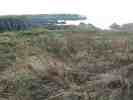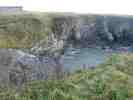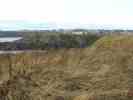 | Caithness.Org | Community | Business | Entertainment | Caithness... | Tourist Info | Site Map |
• Advertising • Chat Room • Contact Us • Kids Links • Links • Messageboard • News - Local & Scottish • News - UK & News Links • About / Contact Us • Submissions |
• Bookshop • Business Index & News • Jobs • Property For Sale • Property For Rent • Shop • Sutherland Business Index |
• Fishing • Fun Stuff • George, The Saga • Horses • Local Galas • Music • Pub Guide • Sport Index • What's On In Caithness |
• General Information • B & Bs • Backpackers • Caravan & Camping • Ferries • Getting Here • Holiday Letting • Hotels • Orkney • Pentland Firth • Sutherland • Taxis |
| N E W S F E E D S >>> |
St Ninian's Chapel
|
St Ninian's Chapel St Ninian was commemorated at Dunrossness in Shetland (Sibbald's Descriptions 1711, P15) at Stove in South Robnaldsay, Orkney (Peterkin' Rentals, No 111) at the North Head of the Bay of Wick, Caithness. (Orkneyinga Saga, Edited by Joseph Anderson).
St Ninian is commemorated in the church and Burial Place at Navidale, near Helmsdale and a church at the head of Wick. Ninian was a Briton and the founder of the famous institution at Whithorn in Galloway, and an Apostle of the Southern Picts. He died about 437 (History of the Province of Cat by Rev. Angus Mackay) St Ninian's Church site on wick Head, Prehistoric. the Haven for this church was called Papigoe showing that the Vikings found it used by clerics when they came to Caithness. St Ninian's church was disused after the Roman church was organised because St Fergus's became the Church of Wick. (Copied from a book entitled "St Ninian, Apostle of the Britons and Picts". A Research Study of the First Founding of the church in Britain) (The book is in Wick library). The site of the Chapel at Papigoe was discovered in 1999. The discovery was reported to Mr wood, Highland Archaeologist a few days later. A few weeks later he visited the site and said that he was very impressed by it and that he would like either to do an exploratory dig on the site or have it surveyed by electronic equipment. About a year later Mr Wood did organise an exploratory dig on the site in which he was to have been assisted by members of Caithness Field Club, but a few days before the dig was due to take place, Mr wood had to call it off owing to staff shortages. It is generally believed througout the east coast of Caithness that Christianity came to Caithness through St Ninian a long time before St Columba landed on Iona in 563. St Ninian and his followers established a church at Navidale, Sutherland. They then sailed northwards along the Caithness coast establishing churches or Chapels at Berriedale, Dunbeath, Latheron, Mid Clyth, Ulbester and Wick. It is then believed that they sailed to Orkney and Shetland where they continued to spread Christianity. |










